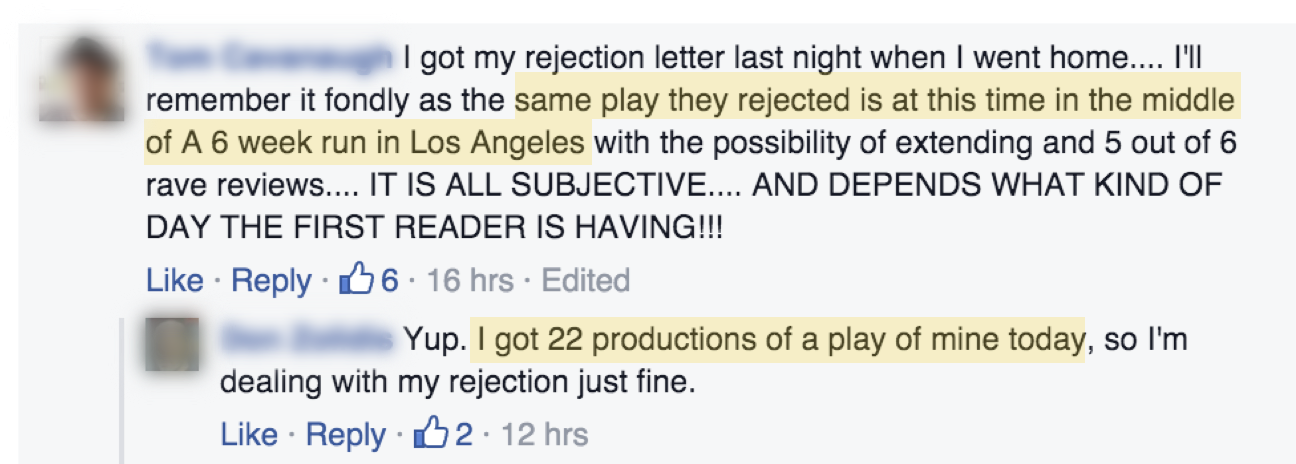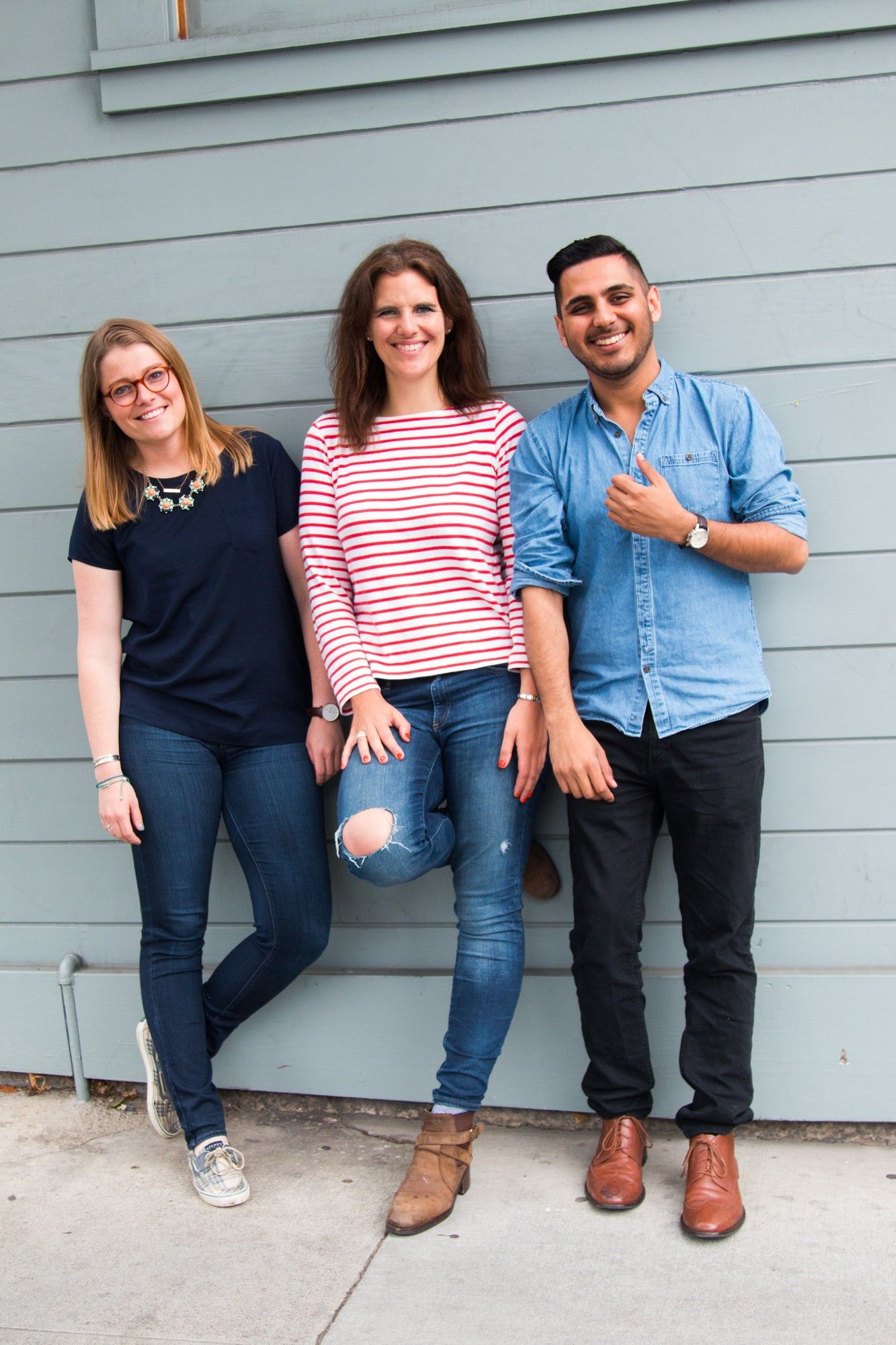Discovering stories that Matter.


Jamie stood in the centre of the room, examining the dusty walls as her eyes adjusted to the dim light. Where she stood had power. Power for challenge, expression, questions and connection. These were no ordinary four walls.
This was a theatre.
This theatre could be anywhere. One of the 100 million worldwide school stages or under the luminous light of Broadway. But the question being considered from the centre of the empty space is always the same: what’s the story?
Jamie could write her own words or choose from over 2,500 years of writing that has come before her. Whatever comes to life in this room, all starts at the same place.
It starts with the script.
But where do Jamie and hundreds of thousands of other theatre professionals go to find scripts? There is no single, central place to discover them. They are everywhere and nowhere at the same time.
When Googling ‘plays for sale’ you’re instantly given 104 million possible results. But there is no clear or common path. It can take anywhere up to 12 weeks and five separate touch points to secure the right to perform a script. Weeks of research, emails, letters (yes: with stamps!), phone-calls (and occasional mind-reading) to have what you need so that rehearsals can begin.
Why does it take so long? Well, there are a lot of factors in the decision to distribute a performance license: number of shows, audience size, location, ticket cost, exclusive periods and more. The industry struggles to operate at any type of complexity or scale. Whilst it may sound small, the licensing teams of publishers and agents account for up to 1/3rd of their staff. Hesitation over software-based, automated licensing is largely concerned with protection of digital, PDF files: how can you protect the sacred value of a script when a digital file can be shared (or worse, violated) with ease?
If a script can transform a room into any place, in any world, at any time…the licensing process returns everyone to the dark ages.
Digital innovation within the creative industries has established a $2.25 trillion industry. The common-thread throughout this powerful movement is democratisation and centralisation.
Novelists can publish on Amazon. Vloggers have a platform for their voice on YouTube. Film-makers, their own creative space on Vimeo. And music can be discovered on Spotify.
But for theatre? There is nothing.
The performing arts slice of of the creative industries revenue is a healthy $127 billion. (Famed Broadway show, Hamilton is about to hit ‘unicorn status’ in its own right.) Our theatres sell more tickets than all 32 NFL teams combined.
The last major injection of technology amplifying scripts was Gutenberg’s printing press.
So what does this mean for Jamie, standing in the centre of an empty theatre? Will she find the right story? When she leaves, she’ll head upstairs to her office. You see, Jamie doesn’t just search for scripts. She also receives them. About 3,000 per year. As Artistic Director of a production company, she employs a team of 30 freelance readers to tackle the piles of script submissions.
Teams of readers at every publisher, theatre, agent and production company around the world plough their way through log lines of thousands of plays every day. They have seconds to decide whether or not to reject or accept. Often before they even read a single line of dialogue. Is there a formula that separates a box-office hit and a financial flop? What separates Hamilton from High School?
We shouldn’t ever judge a book by its cover, but apparently you should when it comes to scripts.
Readers, literary managers, agents, producers and publishers are trying to guess — on the basis of gut feeling and fleeting moments — at the same question that 46 million people who make up American audiences ask: is it good?

The reality is that this question is flawed. It’s full of bias, riddled with conscious and subconscious influences and doesn’t actually articulate what someone is actually looking for.
Ultimately, Jamie and her team are trying to de-risk their decision to invest in a writer, to back a show or mount a production. So they look at production history, commercial potential, themes, composition, context, and writing quality. One of the biggest influences on their decision, in this moment, is something small and simple. The distribution of lines per character.
A show may be the best quality writing, perfect analysis of themes and have a great production history — but if it has 42 characters with equal sized parts, it would be commercially impossible to mount. But, that very same script, would be perfect for any of the 37,000 high schools in America.
It’s not a question of good or bad. It’s all about ‘relevance’.
(And for some record-breaking performances it’s not even a question of good at all…but that’s another story entirely!)

You see, Jamie’s theatre can’t afford what it would cost to read every single line of every play. But, paradoxically — she can’t afford not to.
So what are we talking about here? Does Jamie simply have to be lucky? To be in the right mood? To read the opening line of a script, prompting enough interest to turn the page?
Should serendipity or tragic accident be the only reason masterpieces light up a room or lie in the dust, undiscovered?
And now for the greatest theatrical paradox. The solution is right there. The information has been there for over two millennia. Its only been technically possible in recent years to dive in and understand the script, summarise its contents and give power to those making decisions.
Now, it’s theatres’ turn for digital innovation.
Scripts are a beautifully structured form of writing. An act is always an act, a scene a scene, a character’s name always proceeds a line. Whilst every story is completely unique in its content, each script follows the same rules; they all behave in the same way. Because of these rules we can transform the writing into insights.
And the best part? What works for theatre, is true across all scripted literature. There are ‘Jamies’ working in television, film, animation and radio. They all face the same challenges. Scripted literature sits at the heart of the creative industries worth over $700 billion.
We’ve experienced this problem from the ground up. Our story started when Adrienne struggled to find work to to stage at her school in Edinburgh. So the teacher became the writer and went on to write 7 shows, that received critical acclaim. We’ve faced the challenges of getting work published from the perspective of an independent writer and brought to life shows on some of the world’s biggest stages.

Together, our team — Adrienne Ferguson, Laura Fisher and Jesal Rajdev — have been involved in the writing, producing and performing in with over 90 theatre productions: spanning everything from a school nativity to London’s West End.
Collectively we have 5 degrees, with specialties in Human Computer Interaction and User Experience. Our professional backgrounds include PwC, Ernst & Young and Merrill Lynch. We’ve founded businesses that still run today.
We want to empower decision making and choice. To amplify undiscovered and undercapitalised content. Create a digital channel for scripted literature, that enables our most significant and relevant stories to be shared. We’re committed to informing decision making, to putting control and understanding in the hands of the user.
We’re connecting producers, directors, publishers and agents with content on a smart, searchable platform driven by AI.
That’s why we’re building TreePress. We have a vision to make scripted literature easily accessible for everyone, everywhere. Join us.

